Get started
Get started

Multisignature wallets, or “multisig”, offer a way to improve the security of your bitcoins in self-custody, by requiring multiple signatures from multiple keys to spend them. This method minimizes the risks of loss and theft by spreading the risk across multiple keys, which ensures that funds are protected even if a key is compromised or lost.
In this article, we explore everything you need to know about multisigs, their pros and cons, and the recent technical innovations that have helped make them work better.
Bitcoins locked with a single-signature wallet, or singlesig, can be spent with a single signature from a single private key. All private keys are derived from a single recovery phrase. It is the most common form of Bitcoin wallet. Although this security method is simple, it has a single point of failure (SPOF: Single Point Of Failure): if the mnemonic phrase is compromised, the bitcoins can be stolen, and if it is lost, access to the wallet becomes impossible.
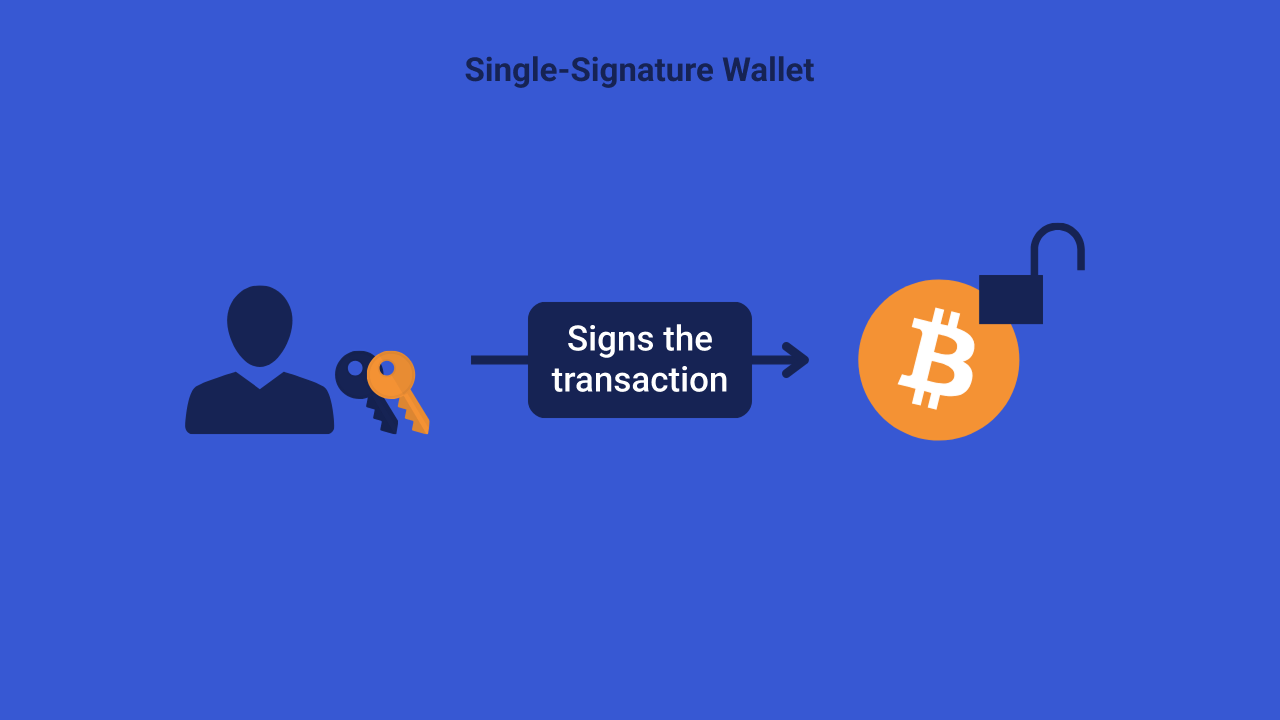
In comparison, a multi-signature wallet increases security by requiring multiple private keys to approve a transaction. This system is structured according to a model” M-de-n ”, where” M ” indicates the minimum number of signatures required to complete a transaction, and” N ” represents the total number of keys participating in the multisig wallet. For example, in a 2-of-3 (or 2/3) configuration, three private keys are generated, but only two are required to validate a transaction.

From these keys, the multisig wallet generates receiving addresses. Bitcoins deposited on these addresses can only be spent by presenting the required number of valid signatures, based on the established threshold.
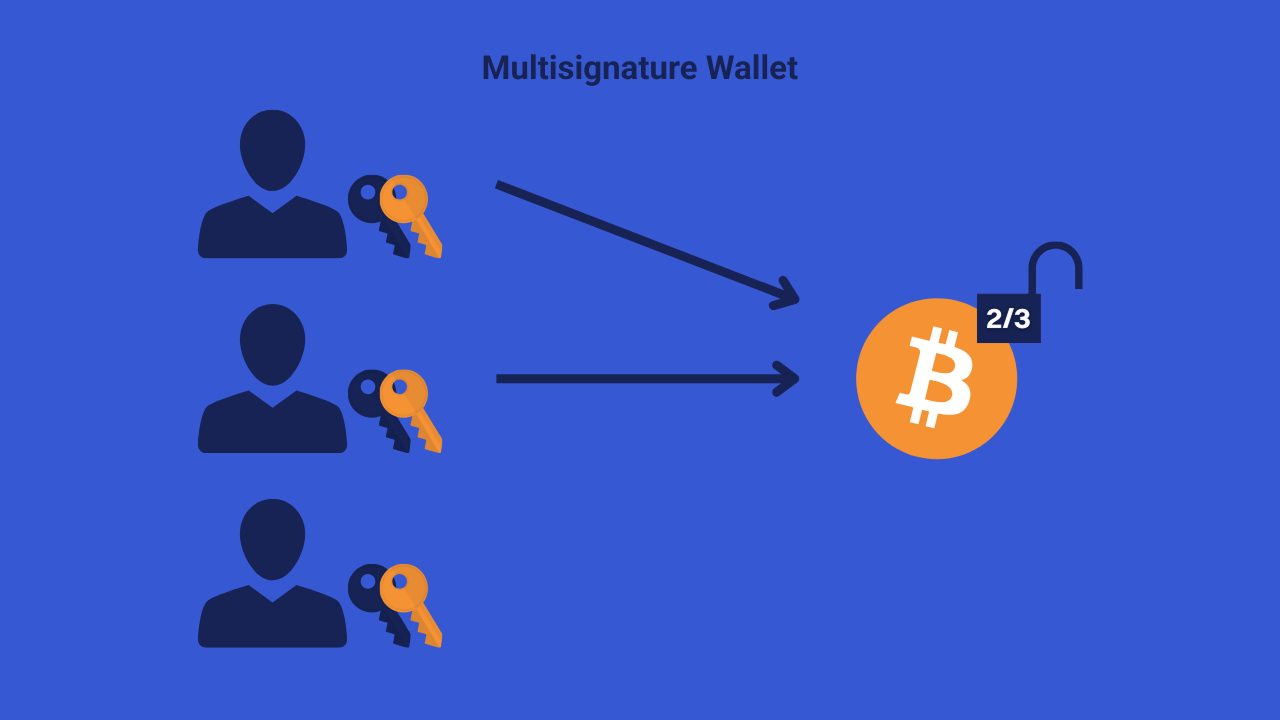
The main advantage of the multisig portfolio is that it distributes risk across multiple factors. Depending on how multisig is set up, this can add an additional layer of security against bitcoin theft and loss. Take the example of a multisignature consisting of the keys A, B and C, which requires only 2 signatures to release the funds (2/3).
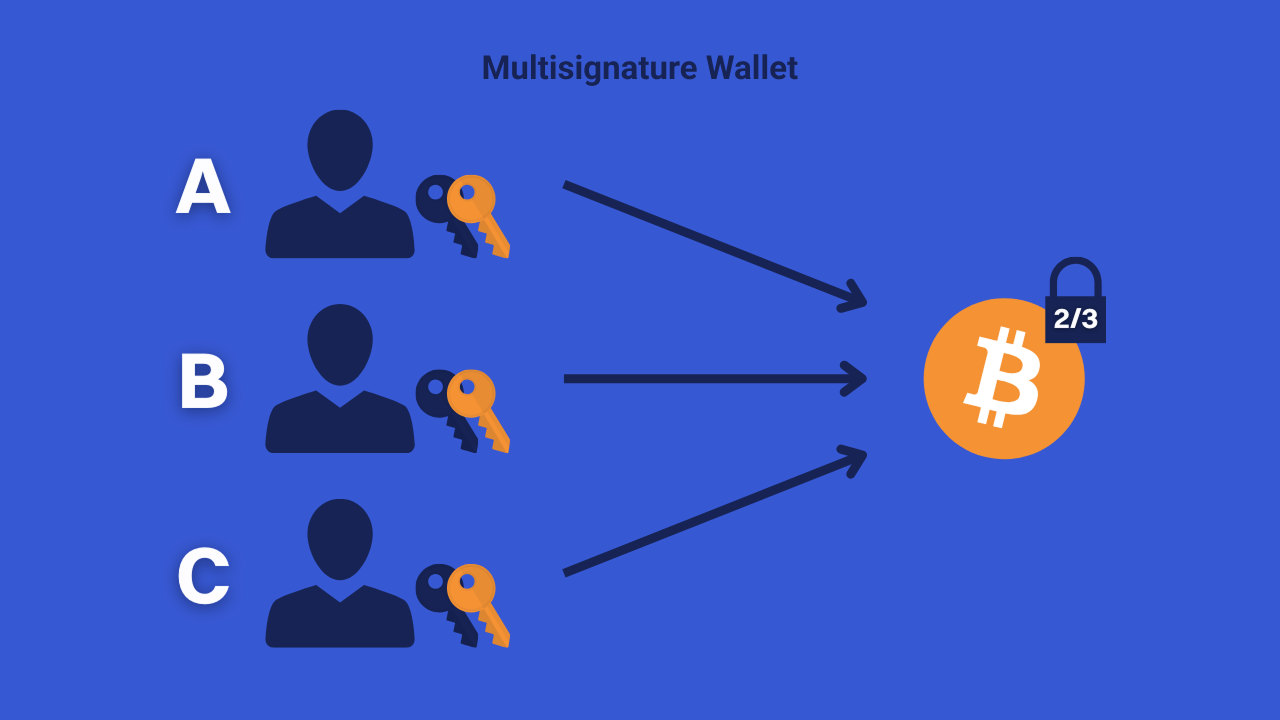
If key A is stolen, the attacker cannot steal the bitcoins since he only has one key, although at least 2 are needed.

In another case, if key B is lost, the user can still make transactions using keys A and C, as two signatures are sufficient.
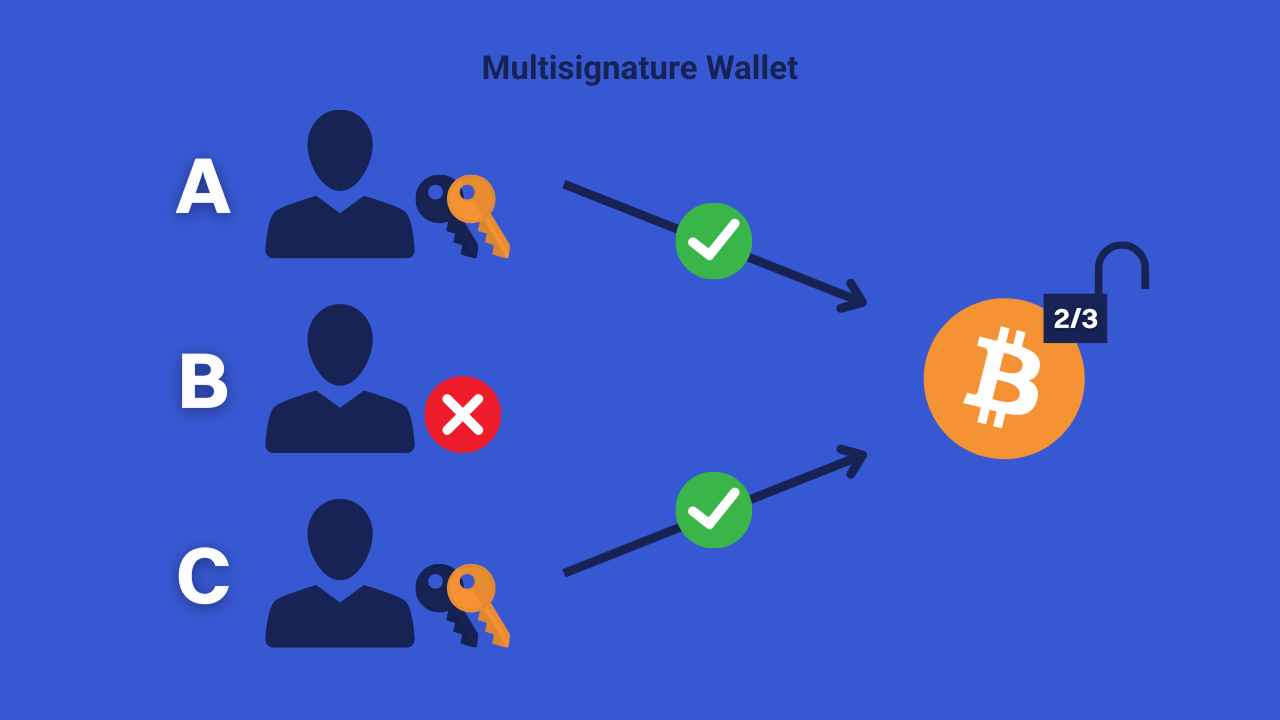
However, the multisig wallet also has disadvantages, especially when it comes to backup. For a single-signature wallet, all you need is the recovery phrase, possibly accompanied by a passphrase, to restore access to bitcoins on standard derivation paths. On the other hand, for a multisig, the backup is more complex: you must either have all the recovery phrases, or have a number of sentences equal to the required threshold, and all the xpubs in the wallet. For example, to recover a 2/3 multisig, you must either have the 3 sentences, or have 2 of the three, but in this second case, you must also have the 3 xads in the wallet.
Another disadvantage is the management of the various keys. If you have a 2/3 multisig wallet with 3 Ledgers, you need to monitor the 3 hardware wallets, the 3 recovery phrases and the 3 xpubs. Managing a multisig is therefore much more complex.
Also, because multi-signature transactions are heavier, they require higher fees to be included in the blocks. Also, their footprint is quite easily recognizable on the blockchain, which can reduce the confidentiality of transactions, because few people use multisigs.
Fortunately, recent innovations in Bitcoin, like the Schnorr signatures introduced with Taproot in 2021, have alleviated some of these drawbacks. New generation multisigs now generate transactions that are indistinguishable from transactions coming from singlesig wallets. The linearity of Schnorr's signatures thus makes it possible to reduce the transaction costs of multisigs and to improve their confidentiality.
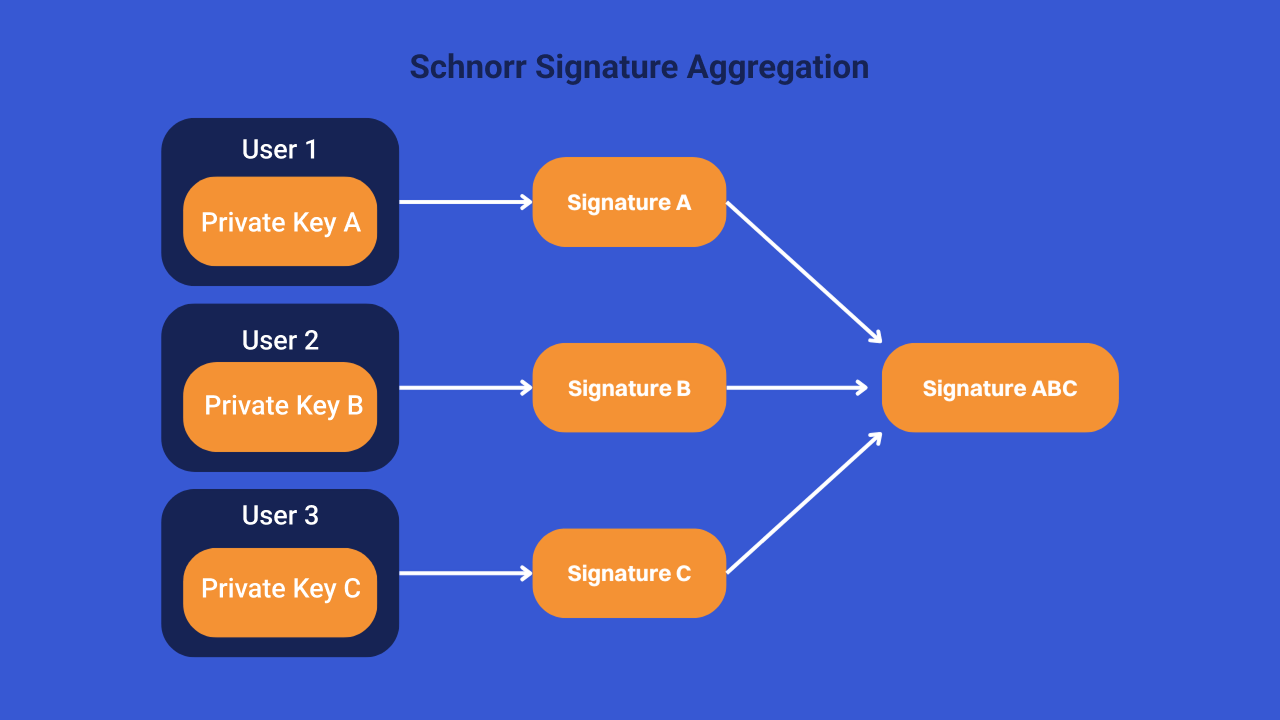
Finally, the introduction of” Outputs Descriptors ” now makes it easier to save the xpubs required to recover a multi-signature wallet, which considerably simplifies their management.
➤ Learn more about the Taproot soft fork.
Obviously, multisig is not necessarily the best solution for everyone. If your Bitcoin savings are not very significant and represent only a small fraction of your total assets, opting for a multi-signature wallet could be disproportionate. A singlesig wallet with a hardware wallet and, possibly, a BIP39 passphrase, already offers a very high level of security when properly used. However, that choice is yours. If you don't feel confident with a singlesig and feel that a multisig is necessary, then this could be a smart option.
Multisigs are especially recommended for corporate portfolios, or more generally, for all shared portfolios that require joint management (families, friends, etc.). They are also recommended for those who hold large amounts of bitcoin.
However, the recent appearance of new tools on Bitcoin greatly simplifies the use of multisigs, which could encourage wider adoption of this security method.
➤ What is a passphrase on a Bitcoin wallet?
A year ago, Bitcoin Core implemented an innovation called” Miniscript ”. To explain to you simply, Miniscript is a tool that provides a framework for programming scripts securely (this is what we call a “framework” in computer science). This tool now allows portfolio software developers to create custom and complex scripts in a safe and reliable manner.

Thanks to Miniscript, new software such as Liana have emerged, which offer users the ability to set up their own decreasing multisignature wallets with time locks (Timelocks) and several recovery options.
For example, with Liana, it is possible to configure a 2/2 multi-signature wallet to maximize security, while programming that after a year of no activity, the multisig will only become 1/2.
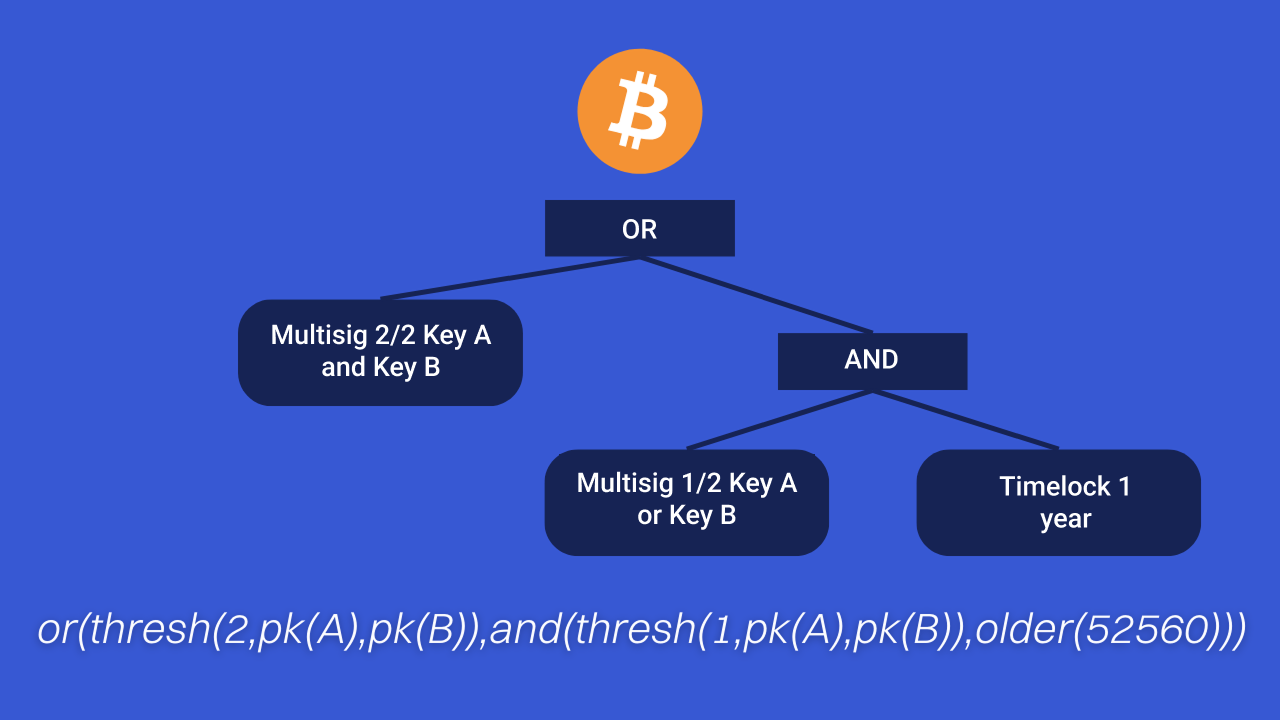
This method is called” Decaying Multisig ” ensures that, even if you lose access to one of the two keys, the bitcoins are not permanently lost, but can be recovered with a single key after a waiting time. This is just one example, but you can imagine endless customizations for your portfolio.
These innovations brought by Miniscript to multi-signature wallets are particularly promising, as they reduce both the risks of loss and theft, which could facilitate the democratization of bitcoin self custody.
Many portfolio management software allows you to configure multisigs. Among them, Specter Desktop and Sparrow Wallet allow the creation of classic multisigs, but they do not support advanced scripts. If you are interested in using Miniscript to set up more sophisticated and scalable multisig configurations, Liana software is a good option that is easy to learn.
Multisignatures enhance the security of Bitcoin wallets by requiring one threshold among several keys to validate a transaction, which reduces the risks of loss and theft. Unlike single-signature wallets, which often have a single point of failure, multisigs spread the risk across multiple factors. This security comes with greater complexity, especially in terms of management and backup.
However, recent Bitcoin innovations, such as Miniscript, Descriptors, and Taproot, have greatly improved multi-signature wallets by mitigating their drawbacks. These multisigs are now more customizable, easier to manage and no longer pose privacy issues or fees on the blockchain. These advances could lead to a democratization of the use of multisigs in the future.




